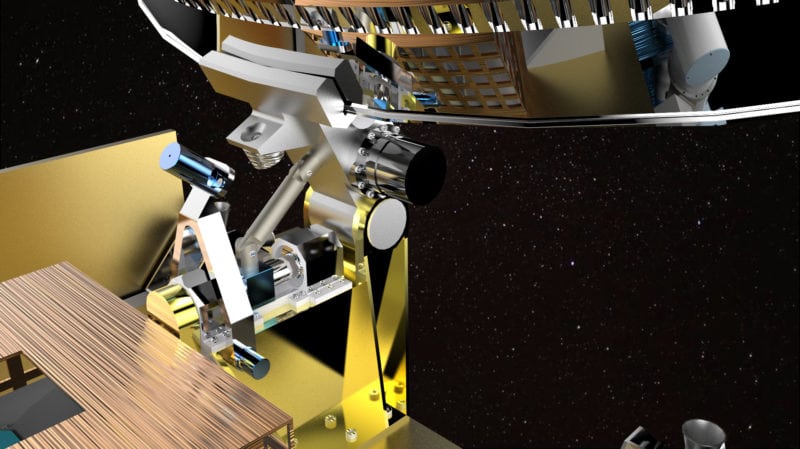Latest News

An artistic rendering of Sener’s clamping mechanism, which will be used as part of the solution for space debris under the eDeorbit program. Photo Credit: Sener
Year after year, traffic orbiting the Earth is increasing while space debris poses an ever-greater threat for satellites and crews of space vehicles. To combat this problem, the European Space Agency (ESA) is organizing the e.Deorbit mission as part of the “Clean Space” initiative. The e.Deorbit mission has the objective of removing the inactive Envisat satellite, which is the heaviest civil unmanned satellite in space, according to ESA, weighing 8.2 tons and, together with the solar panel, is more than 25 meters long.
The e.Deorbit mission is a major technological challenge owing to the size and unknown rotation of Envisat. After significant research and development projects, ESA has selected the next stage of the mission, which is headed by Airbus and includes technology group Sener.
The chosen solution consist of a so-called chaser satellite that will capture Envisat by using a robotic arm. The robotic arm will perform a grappling operation on Envisat and, following a detumbling operation, Sener’s clamping mechanism will fix on the Envisat’s Launch Adapter Ring. Subsequently, engines will be activated and satellites will be directed to the Earth’s atmosphere where they will partially burn up and their remains will fall into the Pacific Ocean.
Sener’s clamping mechanism has to ensure a high level of rigidity of the connection with Envisat in order to resist the considerable forces acting on the device during manoeuvers. It also requires great precision since the mechanism must capture the inactive satellite by the ring that used to connect it to the launch rocket.
Get the latest Via Satellite news!
Subscribe Now